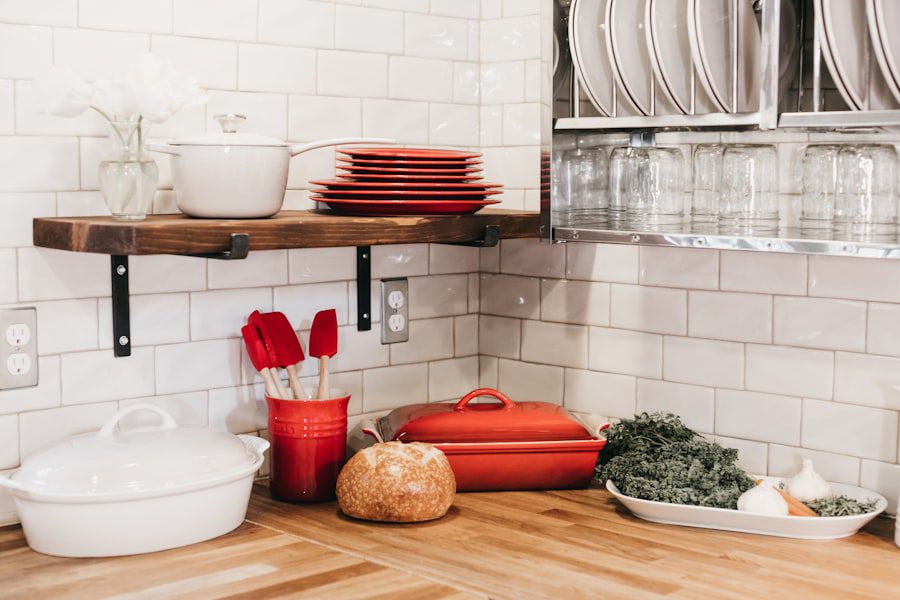Kabul, the capital city of Afghanistan, is facing an energy crisis that has severe implications for its residents. The city’s limited resources and high costs make it challenging for households to meet their daily cooking needs. Energy-saving cooking techniques are crucial for sustainability and cost-effectiveness in Kabul. By adopting these techniques, households can reduce their energy consumption, save money, and contribute to a more sustainable future.
The Challenge of Cooking in Kabul: Limited Resources and High Costs
Households in Kabul face numerous challenges when it comes to cooking. The high cost of fuel and limited access to electricity make it difficult for families to meet their daily cooking needs. Many households rely on traditional fuels such as wood, charcoal, or kerosene, which are not only expensive but also contribute to deforestation and indoor air pollution.
The impact of these challenges is felt on a daily basis by families in Kabul. The high cost of fuel puts a strain on household budgets, leaving less money for other essential needs such as education and healthcare. Additionally, the limited access to electricity means that families cannot rely on electric stoves or ovens, forcing them to use traditional cooking methods that require more time and energy.
Energy-Saving Cooking Techniques: Tips and Tricks for Efficient Cooking
Energy-saving cooking techniques can help households in Kabul reduce their energy consumption and save money. By implementing these techniques, families can cook their meals more efficiently and effectively. Some tips for reducing cooking time and energy consumption include:
1. Use lids on pots and pans: Using lids while cooking helps retain heat and reduces cooking time.
2. Cook with smaller appliances: Using smaller appliances such as toaster ovens or slow cookers can be more energy-efficient than using larger ovens or stovetops.
3. Optimize burner size: Match the size of the burner to the size of the pot or pan being used. Using a smaller burner for a small pot can save energy.
Examples of efficient cooking methods include steaming, stir-frying, and pressure cooking. Steaming vegetables retains their nutrients and requires less energy compared to boiling. Stir-frying allows for quick cooking at high heat, reducing cooking time. Pressure cooking uses steam pressure to cook food faster, saving time and energy.
Choosing the Right Cookware: Materials and Designs for Energy Efficiency
| Cookware Material | Energy Efficiency Rating | Pros | Cons |
|---|---|---|---|
| Stainless Steel | High | Durable, easy to clean, non-reactive with food | Not a good heat conductor, can be heavy |
| Aluminum | High | Good heat conductor, lightweight | Can react with acidic foods, can warp or scratch easily |
| Copper | Very High | Excellent heat conductor, heats up quickly and evenly | Expensive, requires maintenance, can react with acidic foods |
| Cast Iron | High | Retains heat well, can be used on all cooking surfaces including induction | Heavy, requires seasoning and maintenance, can rust if not cared for properly |
| Ceramic | High | Non-reactive with food, easy to clean, can be used in oven or microwave | Not a good heat conductor, can chip or crack easily |
Choosing the right cookware is essential for energy-saving cooking. Different materials and designs have varying levels of energy efficiency. Some materials, such as copper and aluminum, conduct heat more efficiently than others. Cookware with thick bottoms and tight-fitting lids also helps retain heat and reduce cooking time.
When choosing cookware for energy-saving cooking, consider materials such as stainless steel or cast iron, which have good heat conductivity. Look for cookware with thick bottoms and lids that fit tightly to trap heat. Non-stick coatings can also help reduce the need for oil or butter, further saving energy.
Smart Kitchen Layouts: Maximizing Space and Reducing Energy Waste
The layout of a kitchen can have a significant impact on energy efficiency. By maximizing space and reducing energy waste, households in Kabul can create more sustainable kitchens. Some tips for achieving this include:
1. Optimize storage: Organize kitchen cabinets and drawers to maximize storage space and make it easier to find items. This reduces the need to search for utensils or ingredients, saving time and energy.
2. Efficient appliance placement: Place appliances strategically to minimize heat loss and maximize efficiency. For example, keep refrigerators away from direct sunlight or heat sources to reduce energy consumption.
3. Natural lighting: Utilize natural lighting as much as possible during the day to reduce the need for artificial lighting.
Smart kitchen designs can also incorporate energy-saving features such as efficient lighting fixtures, insulation, and energy-efficient appliances.
Alternative Cooking Methods: Exploring Solar, Biomass, and Other Options

In addition to energy-saving cooking techniques, alternative cooking methods can also contribute to sustainability in Kabul. Solar cooking, biomass cooking, and other options offer viable alternatives to traditional fuel sources. Solar cookers use sunlight to heat food, eliminating the need for fuel altogether. Biomass cooking utilizes organic materials such as wood or agricultural waste as fuel, reducing reliance on expensive fossil fuels.
Each alternative cooking method has its benefits and drawbacks. Solar cooking is dependent on weather conditions and may not be suitable for all types of food. Biomass cooking requires a steady supply of organic materials and proper ventilation to prevent indoor air pollution.
Fuel-Saving Stoves: Comparing Different Models and Technologies
Fuel-saving stoves are designed to maximize energy efficiency and reduce fuel consumption. There are various models and technologies available that cater to different needs and budgets. Some examples include improved cookstoves, rocket stoves, and gas stoves.
Improved cookstoves are designed to burn fuel more efficiently, reducing smoke emissions and fuel consumption. Rocket stoves use a combustion chamber and chimney design to maximize heat transfer and minimize fuel usage. Gas stoves are a cleaner alternative to traditional fuels but require access to a reliable gas supply.
Each type of stove has its benefits and drawbacks. Improved cookstoves and rocket stoves can be more affordable options for households with limited resources. Gas stoves may require a higher upfront investment but offer convenience and cleaner burning.
Improving Indoor Air Quality: Strategies for Reducing Smoke and Pollution
Indoor air pollution from cooking is a significant health concern in Kabul. The smoke emitted from traditional cooking methods can lead to respiratory problems, eye irritation, and other health issues. Strategies for reducing smoke and pollution include:
1. Proper ventilation: Ensure that kitchens have adequate ventilation to allow smoke to escape. This can be achieved through windows, exhaust fans, or chimneys.
2. Use of improved cookstoves: Improved cookstoves are designed to burn fuel more efficiently, reducing smoke emissions and improving indoor air quality.
3. Outdoor cooking: If possible, consider cooking outdoors to minimize indoor air pollution.
Community-Based Solutions: Collaborating for Sustainable Cooking Practices
Community-based solutions play a crucial role in promoting sustainable cooking practices in Kabul. By collaborating with local organizations, government agencies, and community members, households can access resources and support to adopt energy-saving techniques and alternative cooking methods. Some examples of successful community-based initiatives include:
1. Training programs: Organizations can provide training programs on energy-saving cooking techniques and alternative cooking methods to households in Kabul.
2. Access to resources: Community organizations can help households access affordable cookware, fuel-saving stoves, and alternative cooking technologies.
3. Awareness campaigns: Raising awareness about the importance of energy-saving cooking and its benefits can encourage more households to adopt sustainable practices.
Building a More Efficient and Sustainable Kitchen in Kabul
In conclusion, energy-saving cooking is of utmost importance in Kabul due to the city’s energy crisis and limited resources. By adopting energy-saving techniques, choosing the right cookware, optimizing kitchen layouts, exploring alternative cooking methods, using fuel-saving stoves, improving indoor air quality, and collaborating with the community, households in Kabul can build more efficient and sustainable kitchens.
It is essential for individuals, communities, and government agencies to work together to promote sustainable cooking practices in Kabul. By doing so, households can reduce their energy consumption, save money, improve indoor air quality, and contribute to a more sustainable future for the city. With the right knowledge and resources, every household in Kabul has the potential to make a significant impact on energy conservation and sustainability.



